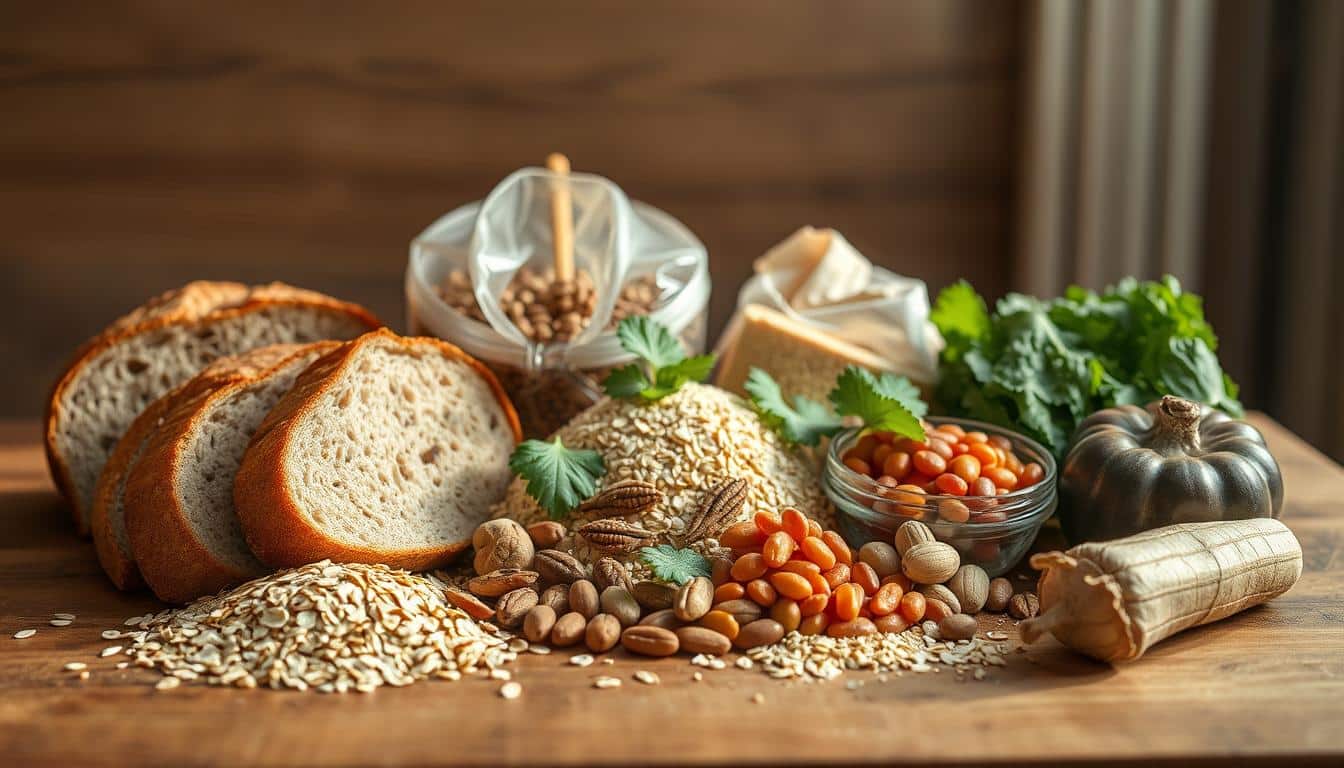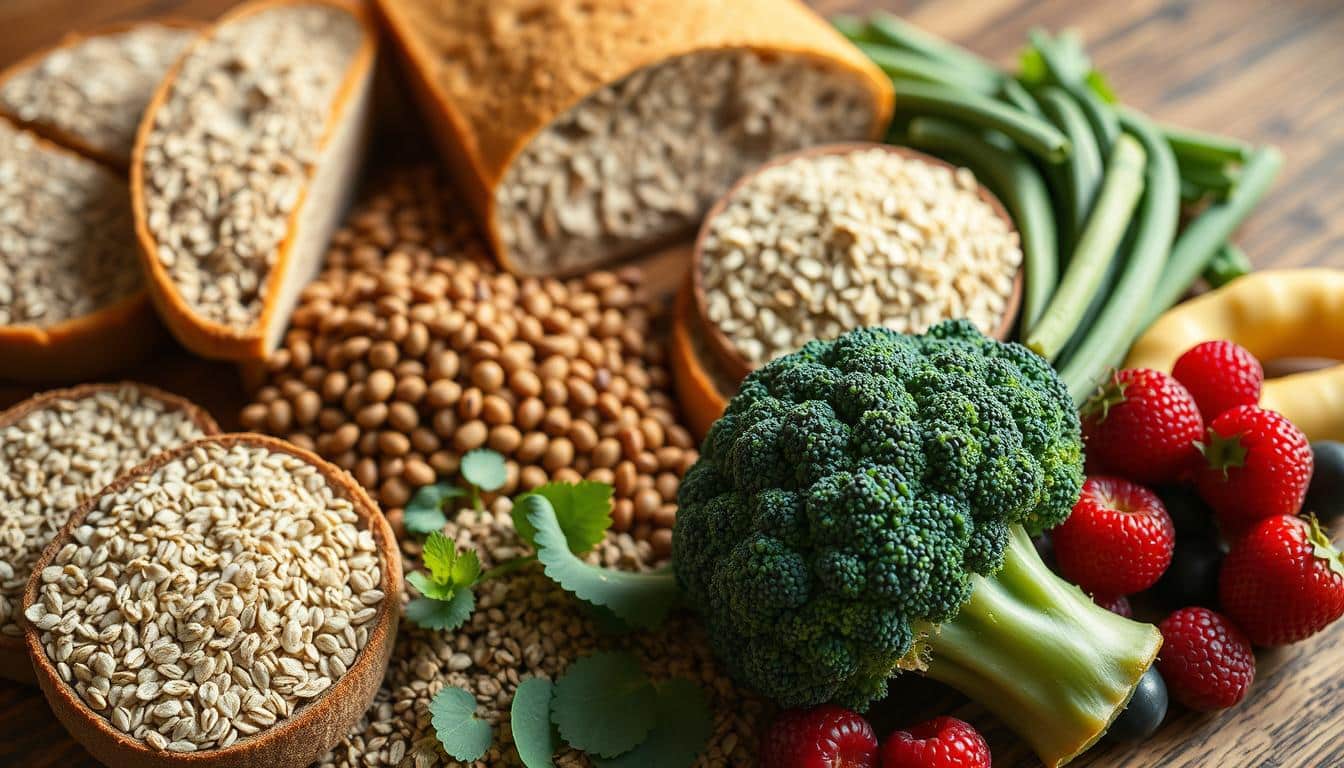When it comes to fueling your body for peak performance, fiber often gets overlooked. Many athletes focus on protein and carbs, but this unsung hero plays a big part in recovery, energy, and gut health. Think of it as the behind-the-scenes support that keeps your body running smoothly.
Studies show that athletes who include enough fiber in their meals feel less fatigued during training. Foods like oats, sweet potatoes, and brown rice are great options to boost your intake. Adding these to your diet can make a real difference in how you perform and recover.
Ready to learn how fiber can help you train smarter and feel better? Let’s dive into the details and see how simple changes can lead to big results.
What Is Dietary Fiber?
Dietary fiber is a unique nutrient that works differently from others. Unlike proteins and carbs, it isn’t broken down into calories. Instead, it moves through your digestive system intact, playing a key role in keeping things running smoothly.

Definition and Types of Fiber
Fiber comes in two main types: soluble and insoluble. Soluble fiber dissolves in water, forming a gel-like substance that helps regulate blood sugar. Insoluble fiber adds bulk to your stool, aiding digestion. Both types are essential for a healthy gut.
How Fiber Differs from Other Nutrients
While proteins and carbs provide energy (4 calories per gram), fiber contributes zero calories. It isn’t absorbed like other nutrients. For example, brown rice contains more fiber than white rice, making it slower to digest and more filling.
Your gut microbiome also plays a big part. It breaks down fiber into beneficial compounds that support overall health. This process sets fiber apart from other nutrients, making it a vital part of your diet.
| Nutrient | Calories per Gram | Digestion Process |
|---|---|---|
| Fiber | 0 | Moves through digestive system intact |
| Protein | 4 | Broken down into amino acids |
| Carbs | 4 | Broken down into glucose |
Why Fiber Matters for Athletes
Fiber is often misunderstood, but it’s a game-changer for athletes. It supports digestion, energy levels, and overall health. For those who train hard, getting the right amount can make a big difference.
The Connection Between Fiber and Athletic Performance
Fiber helps regulate digestion, which is crucial during intense workouts. It also keeps energy levels stable, preventing crashes during long training sessions. Studies show that athletes who manage their intake feel less fatigued and recover faster.
Common Misconceptions About Fiber
Many believe fiber always causes bloating or discomfort. This isn’t true if timed correctly. Eating fiber-rich meals at least two hours before a workout avoids issues. A study found that 17 grams daily caused no problems, while extreme amounts (60+ grams) led to discomfort.
| Meal Time | Fiber Content | Workout Time |
|---|---|---|
| 2+ hours before | Moderate (10-15g) | Optimal digestion |
| Immediately before | Low (less than 5g) | Minimal discomfort |
| After workout | Moderate (10-15g) | Supports recovery |
By planning your meals, you can enjoy the benefits of fiber without the downsides. It’s all about finding the right balance for your body.
The Role of Fiber in Athlete Diets
For those pushing their limits, fiber can be a silent yet powerful ally. It’s not just about digestion—fiber plays a big part in training, recovery, and maintaining steady energy. Let’s explore how it works and why it’s essential for your routine.
How Fiber Supports Training and Recovery
Fiber slows the absorption of carbs, providing a steady release of energy. This is especially helpful for endurance athletes who need consistent fuel. For example, a marathoner’s oatmeal breakfast keeps them going without energy spikes or crashes.
Short-chain fatty acids (SCFAs) from fiber also help preserve liver glycogen. This means your body has more stored energy for longer workouts. It’s a win-win for performance and recovery.
Fiber’s Impact on Energy Levels
Fiber helps stabilize blood sugar, preventing sudden drops in energy. Unlike simple sugars, which cause quick spikes, fiber-rich foods like oats and sweet potatoes keep you fueled for hours.
Here’s a quick guide to timing your fiber intake for optimal energy:
| Meal Time | Fiber Content | Effect on Energy |
|---|---|---|
| Morning | 10-15g | Steady energy throughout the day |
| Pre-Workout | 5-10g | Sustained performance |
| Post-Workout | 10-15g | Supports recovery |
Try these three breakfast recipes to start your day with 10g+ of fiber:
- Overnight oats with chia seeds and berries
- Avocado toast on whole-grain bread
- Smoothie with spinach, banana, and flaxseeds
With these simple swaps, you’ll feel the difference in your training and recovery. Fiber isn’t just a nutrient—it’s a game-changer.
Types of Fiber and Their Benefits
Understanding the different types of fiber can transform how you fuel your body. It’s not just about digestion—fiber plays a key part in energy, appetite control, and overall health. Let’s break down the two main types and how they work for you.
Soluble Fiber: What It Does
Soluble fiber dissolves in water, forming a gel-like substance in your digestive system. This helps slow digestion, keeping you fuller for longer. It’s great for managing hunger and stabilizing blood sugar levels.
Foods like oats, beans, and apples are packed with soluble fiber. Adding these to your meals can help you feel satisfied and avoid overeating. For example, swapping white rice for brown rice increases your soluble fiber intake, keeping you energized throughout the day.
Insoluble Fiber: Why It’s Important
Insoluble fiber adds bulk to your stool, promoting regularity. It’s essential for a healthy digestive system and can help with weight management by prolonging fullness. Whole wheat, veggies, and nuts are excellent sources.
Studies show that insoluble fiber can reduce ghrelin, the hunger hormone, helping you control your appetite. A snack like almonds and celery sticks is a simple way to boost your intake and stay on track with your fitness goals.
By balancing both types of fiber, you’ll support your body mass goals and feel your best during workouts. It’s a small change with big results.
Fiber and Gut Health
Your gut health is more than just digestion—it’s a cornerstone of how you feel and perform. A healthy gut microbiome can boost your energy, improve recovery, and even enhance your mental clarity. Let’s explore how fiber plays a key part in keeping your gut in top shape.
How Fiber Supports a Healthy Gut Microbiome
Fiber acts as fuel for the good bacteria in your gut. These bacteria break it down into short-chain fatty acids (SCFAs), which support overall health. SCFAs help maintain the gut lining, reduce inflammation, and even improve liver glycogen stores by up to 14%.
Your gut-brain axis also benefits. This communication pathway between your gut and nervous system influences mood and recovery. For example, serotonin, a key hormone for sleep, is largely produced in the gut. A fiber-rich diet can help you sleep better and recover faster.
The Link Between Gut Health and Performance
A diverse gut microbiome is linked to better athletic performance. Studies show that athletes with higher microbiome diversity have improved VO2 max, a measure of endurance. Fiber-rich foods like oats, beans, and veggies can help you achieve this diversity.
Here’s a simple 3-day meal plan to boost your gut health:
- Day 1: Overnight oats with chia seeds, a spinach salad with chickpeas, and roasted sweet potatoes.
- Day 2: Smoothie with banana, spinach, and flaxseeds, quinoa bowl with veggies, and lentil soup.
- Day 3: Avocado toast on whole-grain bread, grilled chicken with broccoli, and a berry parfait with Greek yogurt.
Signs your gut needs more fiber include bloating, irregular digestion, and low energy. Adding these meals to your routine can make a big difference in how you feel and perform.
Fiber’s Role in Weight Management
Managing weight effectively often starts with the right nutrients. Fiber, with its zero-calorie contribution, is a game-changer for those looking to control their appetite and improve their body composition. It’s not just about eating less—it’s about eating smarter.
How Fiber Helps Control Appetite
Fiber adds bulk to your meals, making you feel fuller for longer. This can help reduce overeating and keep your training load consistent. For example, a study found that replacing 5% of carbs with fiber led to a 1.2% reduction in body fat.
Here’s how it works: fiber slows digestion, which stabilizes hunger hormones. This means fewer cravings and better control over your calorie intake. A simple swap like choosing whole-grain bread over white can make a big difference.
Fiber’s Impact on Body Composition
Fiber plays a key part in creating a caloric deficit. Since it isn’t absorbed, it helps you eat fewer calories without feeling deprived. Studies using DEXA scans have shown that higher fiber intake correlates with lower body fat percentages.
Here are three macro-adjusted meals to boost your fiber intake:
- Grilled chicken with quinoa and steamed broccoli.
- Lentil soup with a side of whole-grain bread.
- Smoothie with spinach, banana, and chia seeds.
Remember, cutting fiber during calorie cuts can backfire. It’s essential for digestion and maintaining energy levels. Keep it in your diet to support your weight management goals.
Fiber and Blood Sugar Regulation
Keeping your energy steady throughout the day is key for peak performance. Whether you’re training for the Tour de France or powering through a workday, the right intake can make all the difference. Fiber helps stabilize blood sugar, giving you a steady stream of energy without the dreaded crashes.
How Fiber Stabilizes Energy Levels
Fiber slows down digestion, ensuring carbs are absorbed gradually. This means no sudden spikes or drops in energy. For example, a cyclist’s oatmeal breakfast provides fuel for hours, while an office worker’s fiber-rich snack keeps them focused until lunch.
Fiber’s Role in Preventing Energy Crashes
Feeling sluggish mid-day? It might be a sign you need more fiber. A post-crash recovery smoothie with spinach, banana, and chia seeds can help you bounce back. During race week, adjust your meals to include fiber-rich foods like sweet potatoes and quinoa for sustained energy.


